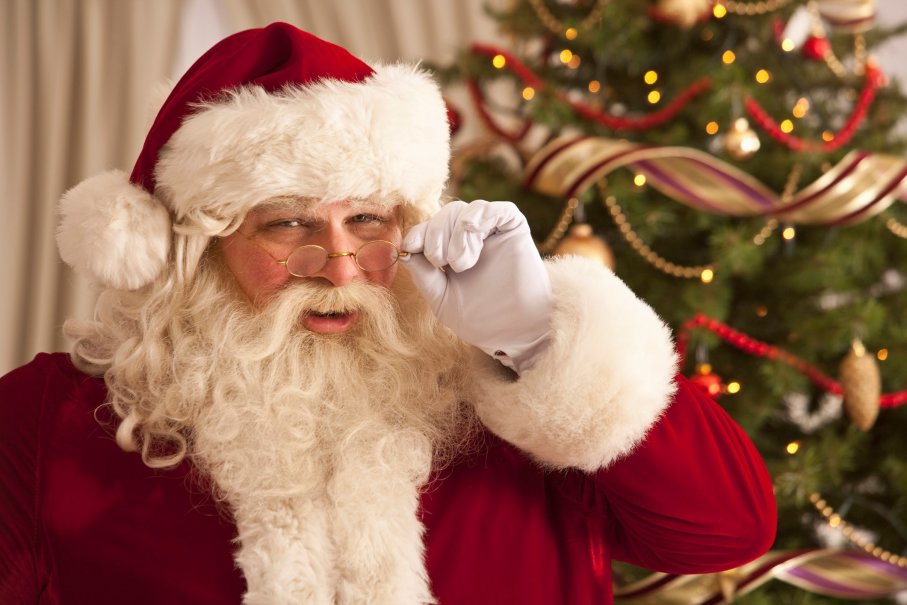Santa Claus: Things You Didn’t Know About Good Old Man: It’s an international jargon because everyone at least knows the good old man and most loves him, yes let’s talk about Santa
Santa Claus
That Big and Cheerful Old Man, Always Dressing in Red , oh sure, with his own personal beard White, however, our good old man did not always have this traditional and world-known appearance.
In fact, many people are surprised to learn that until 1931 Santa Claus was described as a tall, thin man.
- Tall and
- Slim,
or even as a scary looking leprechaun.
like a scary looking pixie
Santa’s Old Look
Santa’s Old Look
He wore a bishop’s cassock and a Scandinavian hunting animal skin.
Reality of the Good Old Man
In fact, when Civil War cartoonist Thomas Nast drew Santa Claus for Harper’s Weekly magazine in 1862, Noel was a tiny pixie-like figure who supported the Union.
Nast continued to draw Santa Claus for thirty (30) years, and it was he who replaced the fur-colored coat with the now-famous red.
Meet some curiosities about this cheerful figure in the red costume.

Santa’s Curiosities
- Advertising is the soul of business
- Santa Claus has been featured in Coke ads since the 1920s
- The Coca-Cola Company began its Christmas advertising in the 1920s with consumer-related advertisements in magazines such as The Saturday Evening Post.
Image of Current Santa Claus
- The Coca-Cola Company began its Christmas advertising in the 1920s with consumer-related advertisements in magazines such as The Saturday Evening Post.
- Santa Claus has been featured in Coke ads since the 1920s
- Coca-Cola helped shape Noel’s image
In 1931, the company began placing Coca-Cola ads in popular magazines.- Then to Coca-Cola instructed Michigan-born illustrator Haddon Sundblom to develop advertising images showing “Noel himself,” not a man dressed as Santa Claus. For inspiration, Sundblom turned to Clement Clark Moore’s 1822 poem, “A Visit of St. Nicholas” (commonly called “Twas the Night Before Christmas”, or, in free translation, “Christmas Eve”) .
- Moores’ narration describes a warm, friendly, pleasantly plump, and human Noel. Although it is often said that Santa wears a red coat because this is the color of Coke, the truth is that Noel was already represented with a red coat before Sundblom painted it.
Sundblom’s Noel debuted in 1931 on Coca-Cola ads in The Saturday Evening Post and appeared regularly in this magazine, as well as in the Ladies Home Journal, National Geographic, The New Yorker, among others.
From 1931 to 1964, Coca-Cola advertising featured a Santa Claus delivering toys (and playing with them!), pausing to read a letter and enjoying a Coke, visiting the children who were awake to greet them. it and breaking into the refrigerators in countless houses.
The original oil paintings Sundblom created were adapted for Coca-Cola advertisements in magazines and on store displays, billboards, posters, calendars and stuffed dolls. Today, many of these pieces are collected by fans.
Final version of Santa Claus in 1964
Sundblom created his final version of Santa Claus in 1964, but for several decades in a row Coke’s advertising spotlighted Noel’s images based on the artist’s original works. These paintings are some of the most valuable pieces in the company’s archives department and have been exhibited around the world in famous locations including the
- Louvre in Paris,
- the Royal Ontario Museum in Toronto,
- the Museum of Science and Industry in Chicago,
- Isetan Department Store in Tokyo, and
- NK Department Store in Stockholm.
- Many of the original paintings can be seen on display at the World of Coca-Cola Museum in Atlanta.
- The “new Noel” was inspired by a salesman
- At first, Sundblom painted the image of Noel using a living model, his friend Lou Prentiss, a retired salesman.
- When Prentiss passed away, Sundblom became the model of himself, painting while looking in the mirror. Finally, Sundblom began to rely on photographs to create the image of St. Nicholas.
- At first, Sundblom painted the image of Noel using a living model, his friend Lou Prentiss, a retired salesman.
Picture of Noel from Coca-Cola
People loved the images of Noel from Coca-Cola and paid so much attention that when something changed, they sent letters to The Coca-Cola Company. One year, Noel’s big belt appeared upside down, probably because Sundblom did the painting by looking in a mirror. In another year, Santa Claus appeared without the wedding ring, making fans write asking what had happened to Ms. Noel.
The children who appear with Santa Claus in Sundblom’s paintings were inspired by their neighbors, two girls, and one of them was replaced by a boy in the paintings. The dog Sundblom depicted in the 1964 Noel painting was actually a gray poodle from the neighborhood florist, but Sundblom wanted the dog to appear prominently in the scene, so he painted the animal with black fur.
- Santa made a new friend in 1942 In 1942, Coca-Cola launched the Sprite Boy, or “elf boy”, a character who appeared alongside Santa in Coca-Cola ads over the decades. 1940s and 1950s. The Sprite boy, who was also raised by Sundblom, got its name from the fact that he was an elf, or an elf. But it wasn’t until the 1960s that Coca-Cola launched the popular Sprite drink.
- Noel begins to be animated in 2001 In 2001, the 1963 Sundblom painting was the inspiration for an animated TV commercial starring Coca-Cola Santa. The announcement was created by Oscar-winning animator Alexandre Petrov.